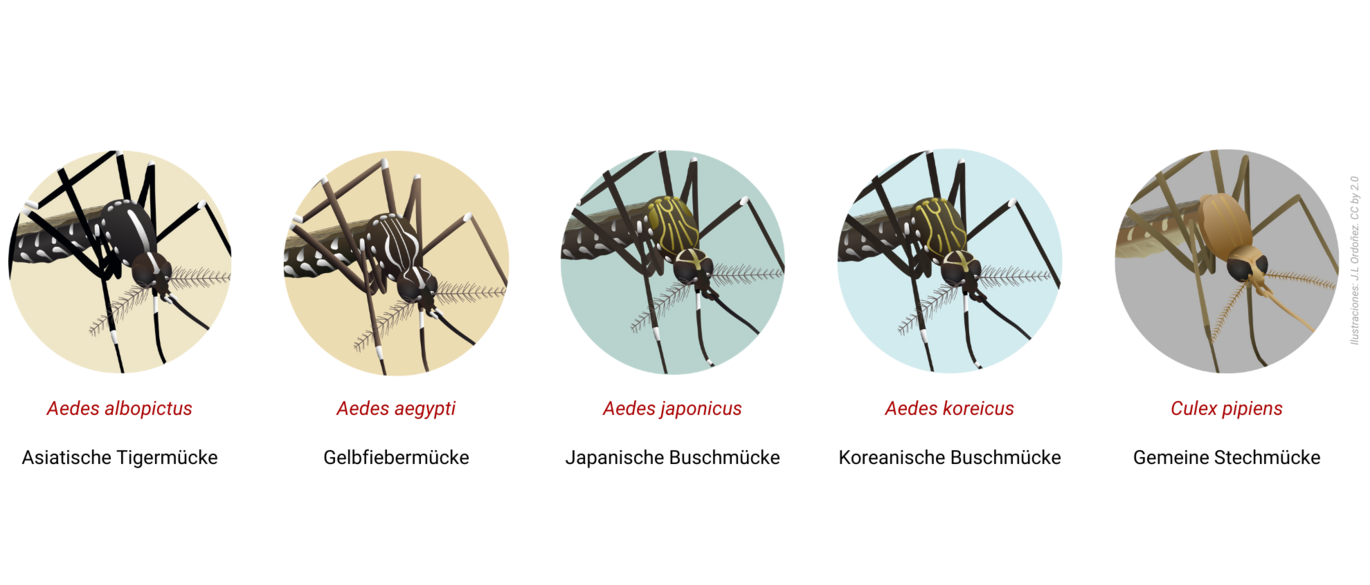Summary
The citizen science project Mosquito Alert records reports from the public on alien mosquito species. This allows new populations of these species to be discovered quickly. Reports are uploaded anonymously via the "Mosquito Alert" app, reviewed by experts and the results are reported back and published on the project website.
Project description
Mosquito Alert is a citizen science project originally from Spain that allows tiger mosquitoes and other mosquitoes to be easily reported using a free app.

Tiger mosquitoes are alien mosquitos that originally come from Asia. In recent decades, this species has spread rapidly in Europe. This species has also been found several times in Austria, and established populations of this species already exist in some areas (in parts of Vienna and Graz). Tiger mosquitoes are not only a nuisance, they can also transmit a variety of pathogens (e.g. the Zika virus or the dengue virus). If tiger mosquitoes spread in Austria, these diseases could also spread.
Tiger mosquitoes are always smaller than a 1 cent coin, have a white stripe on their black dorsal shield and white stripes on their body and legs.
In addition to tiger mosquitoes, the app can also be used to report other types of mosquitoes. These are the Japanese bush mosquito, the Korean bush mosquito and the yellow fever mosquito, which has not yet been detected in Austria. These species are also capable of transmitting certain pathogens and could displace native species. Furthermore, findings of the native common mosquito can be reported. Of the native species, this is the one that is most important in the spread of pathogens (e.g. West Nile virus).

If a participant now sees one of the target species (instructions for recognising and distinguishing are included in the app), photos of this find can be uploaded using the app. Make sure that the pattern on the thorax and hind legs is clearly visible, as these are crucial for species identification. The uploaded photos are then scrutinised by three (out of approx. 50) experts, at least one of whom is a national expert. They then decide whether it is one of the target species, and if so, which one. Based on the visibility of the identification features in the photo, a find is either "definitely" or "probably" assigned to a particular species. The reported finds are displayed anonymously together with the photo on a publicly accessible map.
Benefits of the project
The reported findings can help health authorities or mosquito control programmes to find out where intervention is necessary. The collected dataset is freely accessible and provides scientists with important information on the distribution of the recorded species.
The reports support other monitoring projects such as ovitrap monitoring. In addition, publicly accessible breeding sites can be reported via the Mosquito Alert app, which are then also displayed on the map. This can support the implementation of control measures, as it shows where action is still required. Mosquito bites can also be reported. This information is not yet shown on the map, but in future it could also indicate where the nuisance for citizens is particularly high and therefore measures may be necessary.
Project details
Project title: Mosquito Alert
Project management: CREAF (Centre de Recerca Ecològica i Aplicacions Forestals), UPF (Universitat Pompeu Fabra) ICREA (Institución Catalana de Investigación y Estudios Avanzados) and CEAB-CSIC (Centro de Estudios Avanzados de Blanes)
Project management AGES: Dr Karin Bakran-Lebl
Project partners: in Austria: University of Veterinary Medicine, University of Vienna, Österreich forscht. Further project partners on the project website
Project duration: since 2014 in Spain, since 2020 Europe-wide
Last updated: 04.09.2024
automatically translated